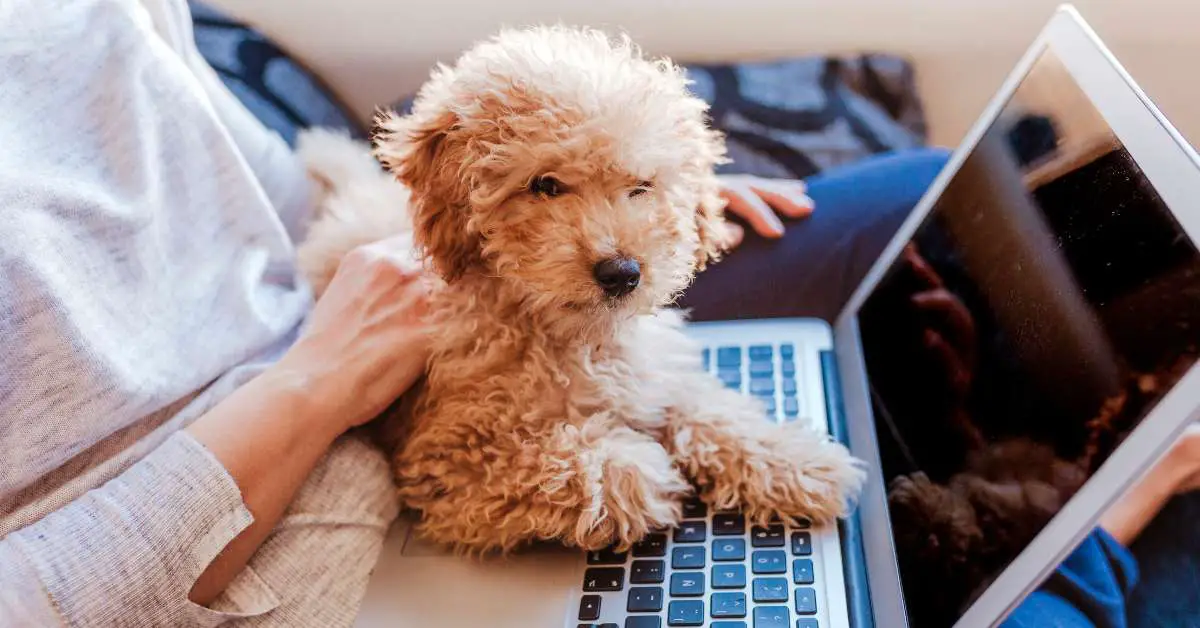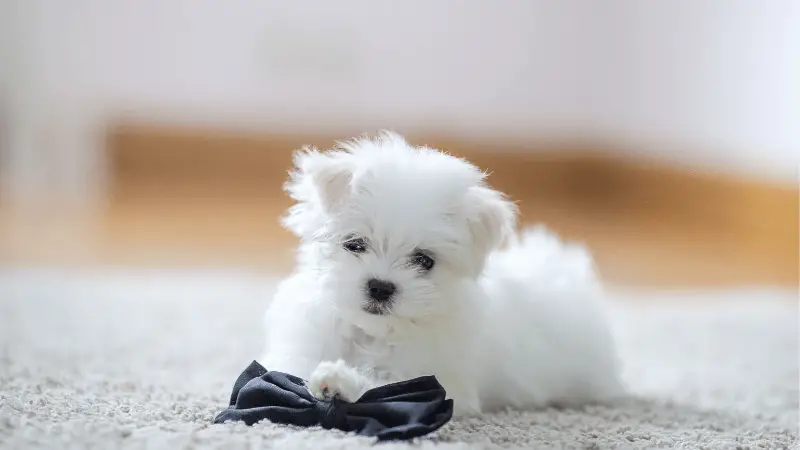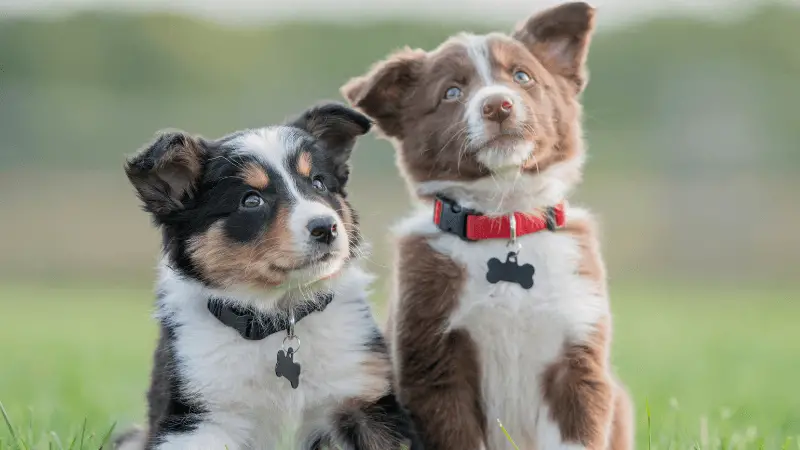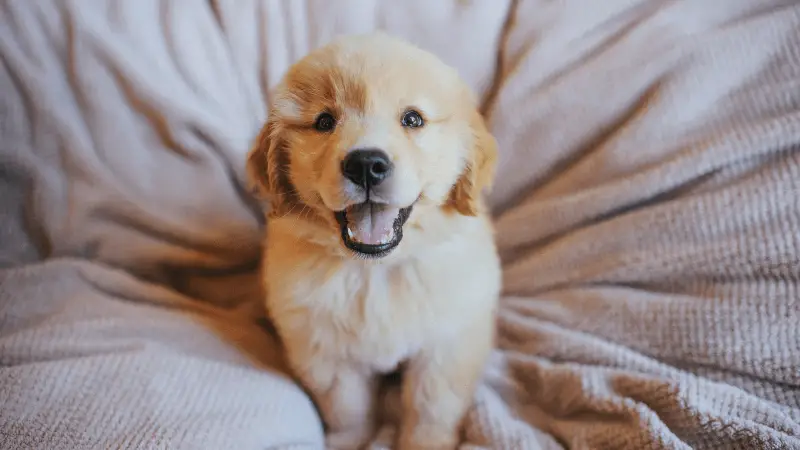Your Complete New Puppy Checklist: Essentials For Pet Parent

Congratulations on getting a new pup!
Now that you’ve decided to bring a dog into your house, you may ask, “All right, what’s next?” Don’t worry! We’re here to assist you.
Our new puppy checklist includes all the essentials to get ready for your new furry companion.
Before moving forward, be sure that our estimate for the whole cost of dog ownership puts the price tag on a new puppy and all its supplies at between $1,000 and $5,000.
Read on to find out everything about the complete new puppy checklist.
(Note: This checklist is flexible and can be applied to older dogs, not just new puppies here.)
Key Notes
- Ensure a Safe Haven: Puppy-proof your space, removing hazards and creating a secure environment for your new furry family member.
- Health and Happiness: Prioritize vet appointments, nutritious food, and positive training to set the foundation for a healthy and well-behaved puppy.
- Joyful Journey Ahead: Embrace the adventure with daily exercise, quality bonding time, and a supportive community for a fulfilling and joyful life with your new puppy.

1. Preparing Your Home
Welcoming a new puppy into your home is a delightful experience, but it comes with the responsibility of creating a safe and comfortable environment for your pup.
Preparing your home involves more than just setting up a bed; it’s about creating a space that fosters a sense of security and encourages positive behaviors.
Let’s explore the essential steps to ensure your home is ready for the pitter-patter of tiny paws.
Puppy-Proofing Your Space
Remove Toxic Plants and Dangerous Items
Begin by identifying and eliminating potential hazards. Some common household plants and items can be toxic to dogs.
Conduct a thorough sweep to ensure your puppy’s environment is free from harmful substances.
According to Justine A. Lee (DVM, DABT), “Blue-green algae and sago palm are potentially dangerous and toxic for dogs to consume”.
Secure Electrical Cords and Small Objects
Young puppies are naturally curious and tend to explore with their mouths. To prevent accidents, secure electrical cords and remove small objects that could pose a choking hazard. Investing in cord organizers and keeping small items out of reach will create a safer space.
Setting Up a Safe Area
Designate a Comfortable Bedding Area
Choose a quiet and cozy corner where your puppy can retreat to rest. Introduce a comfortable bed with soft bedding, making it an inviting space with a sense of security.
Provide Access to Water and Food Bowls
Ensure your puppy has easy access to fresh water and nutritious food. Stainless steel bowls are a practical choice, as they are durable and easy to clean, minimizing the risk of allergic reactions.
Create a Potty Area
Establishing a designated spot for potty breaks is crucial for successful training. Consistency is key, so choose an easily accessible area and reinforce positive behavior through praise and treats.
Getting Puppy Essentials
Collar and Leash
Introduce your puppy to a collar and leash early to facilitate outdoor walks. This not only aids in their physical exercise but also helps establish good walking behavior.
A dog’s collar is also considered one of the main items on your puppy checklist.
Crate/Pet Carrier and Dog Bed
A dog’s crate or pet carrier serves as a haven for your puppy and is a valuable tool for training. Choose a size that allows for growth and make it a positive space by associating it with treats and comfort.
Also, select the appropriate dog bed for your pup. It’s one of the most important items in the puppy checklist by new puppy parents.
Toys and Chew Bones
Puppies love to play and chew, and providing a variety of chew toys helps keep them entertained while promoting healthy chewing habits. Consider different textures and types to cater to their preferences.
Preparing your home involves making physical adjustments and creating a positive atmosphere for your new puppy.
Some other puppy supplies include the following:
- Dog Bowls (Food and water bowls)
- Dog toothbrush
- Id tags
- Poop bags
- Tasty treats
- Nail clippers
By taking these steps, you’re not just creating a safe space but laying the foundation for a loving and harmonious relationship with your pooch.
2. Healthcare and Nutrition
Schedule a Vet Appointment
Vaccinations and Preventative Care
Schedule an initial vet appointment to discuss and establish a proper vaccination schedule for your pooch.
Prioritize vaccinations to protect against common diseases (such as rabies, canine distemper, etc) and ensure your puppy’s health and well-being.
According to Louise T Berndtsson (DVM) from the National Veterinary Institute, Uppsala, Sweden, “The vaccination of dogs against rabies helps to create pre-exposure immunity.”
Discuss preventative care measures tailored to your puppy’s specific needs, including heartworm and flea prevention.

Parasite Control
Protect your pup from common parasites such as fleas and ticks by implementing preventive measures recommended by your veterinarian.
Try to opt for dog poop diagnostic tests (for the finding of intestinal parasites).
Explore options for topical treatments, oral medications, or collars to keep your puppy parasite-free.
Regularly check for any signs/symptoms of infestation and consult your veterinary doctor if you notice any unusual behavior.
Choosing the Right Dog Food
Puppy Food vs. Adult Dog Food
Opt for high-quality puppy food (up to 6–10 months; after that, go for adult dog food gradually) specifically formulated to meet the needs of growing dogs.
Puppy food (from a local pet store) contains essential nutrients that support healthy development during the crucial early months of your puppy’s life.
Consult your vet nutritionist to determine the most suitable brand and type based on your puppy’s breed, size, and individual requirements.
Feeding Schedule and Portion Control
Establish a proper feeding schedule to regulate your puppy’s digestion and maintain a healthy routine. Pups generally eat 3 times a day compared to adult dogs (generally eating once or twice a day).
Divide daily meals into appropriate portions based on your puppy’s age, size, and activity level.
Monitor your puppy’s weight and adjust portions accordingly to prevent overfeeding and maintain optimal health.
Treats and Snacks
Incorporate healthy training treats into your puppy’s diet for positive reinforcement during training sessions.
Choose treats with wholesome ingredients and avoid excessive treats to prevent overindulgence and weight issues. Use training treats as a reward for good behavior, reinforcing a positive association with training and mealtime.
Grooming and Hygiene
Bathing and Brushing
Schedule regular grooming sessions (after every 3 months) to keep your puppy’s coat clean, healthy, and free from mats.
Introduce bathing and brushing early to create a positive grooming experience for your puppy.
Use a mild, puppy-friendly shampoo and a soft brush suitable for your puppy’s coat type.
Nail Trimming
Keep your puppy’s nails at a manageable length to prevent discomfort and potential injury.
Familiarize your puppy with the nail-trimming process gradually, using positive reinforcement and treats to create a calm and positive experience.
Regularly check your puppy’s nails and trim them to maintain healthy paws.
Puppy Teeth Cleaning
Prioritize dental health by introducing teeth cleaning early with puppy-friendly toothpaste and a soft brush.
Brush your puppy’s teeth regularly to prevent plaque buildup and maintain overall oral hygiene.
Incorporate dental chews or toys designed to promote dental health as part of your puppy’s routine.

3. Training and Socialization
Basic Training
Basic Commands
Basic commands such as sit, stay, and come are your new puppy’s cornerstones of obedience training.
Initiating with simple instructions like sit, stay, and come establishes the groundwork for a strong bond.
These commands cultivate obedience and create a language of communication between you and your furry companion.
You can also hire a professional dog trainer for your pup if you can afford that.
Potty Training
Consistency plays a pivotal role in successful potty training. You can encourage your puppy to exhibit the desired behavior by using positive reinforcement techniques and practicing patience.
Establishing a routine and rewarding proper potty habits will contribute to effective and stress-free training.
Crate Training
Make the crate a haven of comfort and security for your puppy by associating it with positive experiences and rewards.
Crate training aids behavioral training and provides your pup with a safe and secure space. It becomes a retreat they willingly enter, promoting a positive attitude towards confinement.
Socializing with People and Other Pets
Puppy Playdates
Socialization is a vital aspect of your puppy’s development. Arrange playdates with other vaccinated and friendly dogs to expose your pup to different personalities and help them build positive associations.
These interactions contribute to improved social skills and overall well-rounded behavior.
Obedience Programs
Enrolling your puppy in obedience programs is an excellent investment in their training and socialization journey.
These classes provide structured environments for interaction with other dogs and people, enhancing their understanding of commands and behaviors.
Additionally, it fosters a sense of discipline and adaptability.
Handling Separation Anxiety
Gradually acclimating your puppy to alone time is essential for preventing separation anxiety.
Start with short intervals, gradually increasing the duration as your pup becomes more accustomed to being alone.
Positive reinforcement during reunions and creating a calm departure routine can help alleviate anxiety.
Positive Reinforcement
Rewards and Praise
Positive reinforcement, through treats, praise, and affection, serves as a powerful training tool, in shaping your puppy’s behavior.
Rewards immediately following desired actions create positive associations, reinforcing good behavior and firming up the bond between you and your pup.
Consistency and Patience
Training is a gradual process that requires both consistency and patience. Consistent application of commands and expectations helps your puppy understand what is required.
Avoiding Punishment
Negative reinforcement can have detrimental effects on the bond between you and your puppy. Focusing on positive reinforcement builds trust and a strong relationship.
Instead of punishing undesirable behavior, redirect your puppy’s attention to more appropriate actions and reward positive alternatives.
Teething puppies generally show some resistant or undesirable behavior.
4. Exercise and Playtime
Daily Physical Activity
Walks and Outdoor Play
Regular walks (once a day) and outdoor play sessions (twice a week) are vital for your puppy’s physical and mental well-being. Adjust the intensity of these activities based on your puppy’s age and breed.
Younger puppies may benefit from shorter, more frequent walks, while older or more active breeds might require longer and more vigorous exercises.
Interactive Toys
Stimulate your puppy’s mind with various interactive toys that challenge their problem-solving skills.
These toys provide mental stimulation, help prevent boredom, and curb destructive behaviors. Rotate the different toys regularly to keep your puppy engaged and excited.
Mental Stimulation
Engage your pup’s brain with puzzle toys and games. Mental stimulation is as crucial as physical activity for a well-rounded, happy pup.
Incorporate activities encouraging your puppy to think and solve problems, fostering cognitive development, and preventing behavioral issues.
Bonding with Your Puppy
Setting Aside Quality Time
Dedicate quality time to bond with your pup. This one-on-one interaction strengthens your connection and reinforces their trust in you.
Whether it’s a gentle grooming session, a quiet moment of petting, or just sharing space, these moments contribute to a deep and meaningful relationship.
Playtime and Cuddles
Playtime and cuddles are essential for your puppy’s emotional well-being. Create a routine that includes moments of affection and fun.
Whether chasing a ball, playing tug-of-war, or simply cuddling on the couch, these activities build a strong emotional bond and contribute to a happy, contented pup.
Training Sessions
Training sessions are not just about obedience; they also strengthen the bond between you and your puppy.
Make training a positive and enjoyable experience using treats, praise, and gentle guidance.
This shared activity enhances communication, understanding, and mutual respect.
Consulting a Vet for Exercise Guidelines
Every dog is unique, and consulting your vet is crucial in determining the appropriate exercise regimen based on your puppy’s breed, age, and health.
Your vet can provide personalized advice to ensure your puppy gets the right amount and type of exercise to support their overall well-being.
Capturing Memories with Your Puppy
Document your puppy’s growth and milestones with photos and videos. These memories will be cherished for years to come. Create a scrapbook or digital album to track their journey from playful puppyhood to a mature companion.
Building a Strong Bond
A strong bond is the foundation of a lifelong friendship. Invest time and effort into nurturing a connection based on trust and mutual respect. The more you understand and appreciate each other, the stronger your bond will become.
Seeking Support from Other Pet Parents
Joining pet communities or seeking advice from experienced puppy parents can provide valuable insights and support.
Sharing experiences with fellow pet enthusiasts can be both comforting and informative. From training tips to dealing with common challenges, a supportive community can enhance your journey as a puppy parent.
FAQs: New Puppy Checklist
When Should I Start Training My New Puppy?
Training should begin when you bring your puppy home. Socialization and obedience training at a young age lay the groundwork.
Practice sit, stay, and come before moving on to harder commands. Keep training sessions short, cheerful, and consistent for maximum benefit.
How Often Should I Take My New Puppy to the Vet for Checkups?
Your puppy’s health requires regular vet visits. Plan monthly visits to assess vaccines, growth, and well-being throughout the first year.
As your puppy grows, yearly checkups should be plenty unless health issues occur. Ask your vet for a schedule tailored to your puppy’s breed and needs.
What Should I Do if My Puppy Is Not Eating or Drinking?
Assess the problem immediately if your dog rejects food or drink. A diet change, stress, or sickness may trigger it.
Make sure the diet is right for their age and breed, and check for dental or stomach disorders. See your vet to rule out health concerns and get advice if it persists.
Final Words
Welcoming a new puppy into your home is a thrilling adventure filled with love, learning, and laughter.
By following this comprehensive new puppy checklist, you’re setting the stage for a harmonious life together.
From puppy-proofing your space to fostering positive training experiences, each step contributes to a happy and healthy journey with your four-legged companion.
Enjoy every moment, and may your new puppy bring immeasurable joy to your life!
